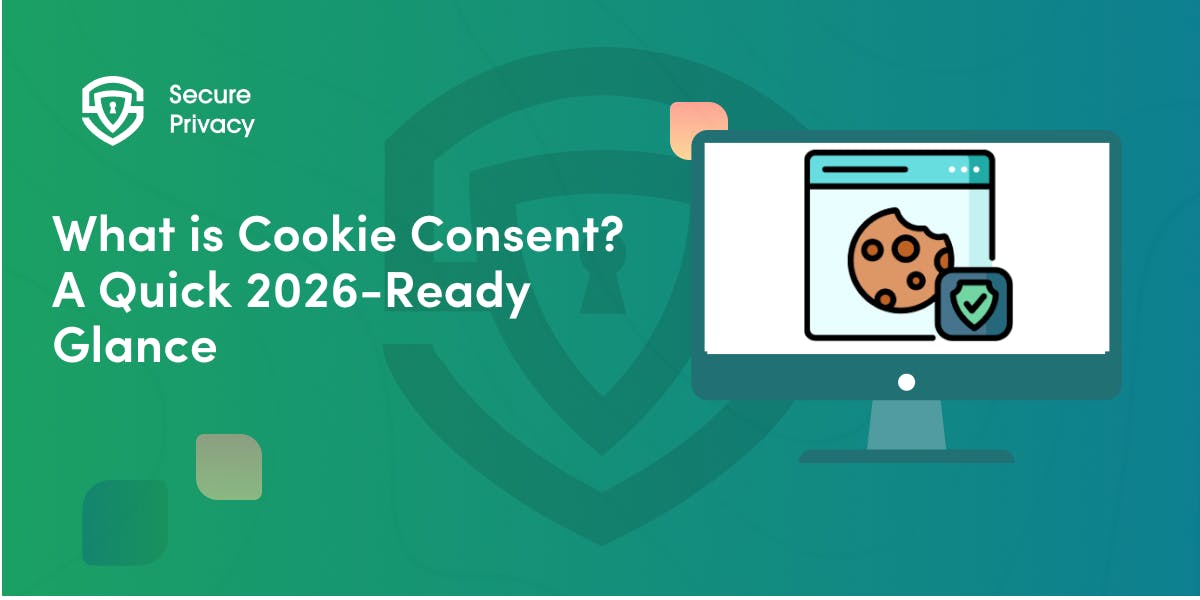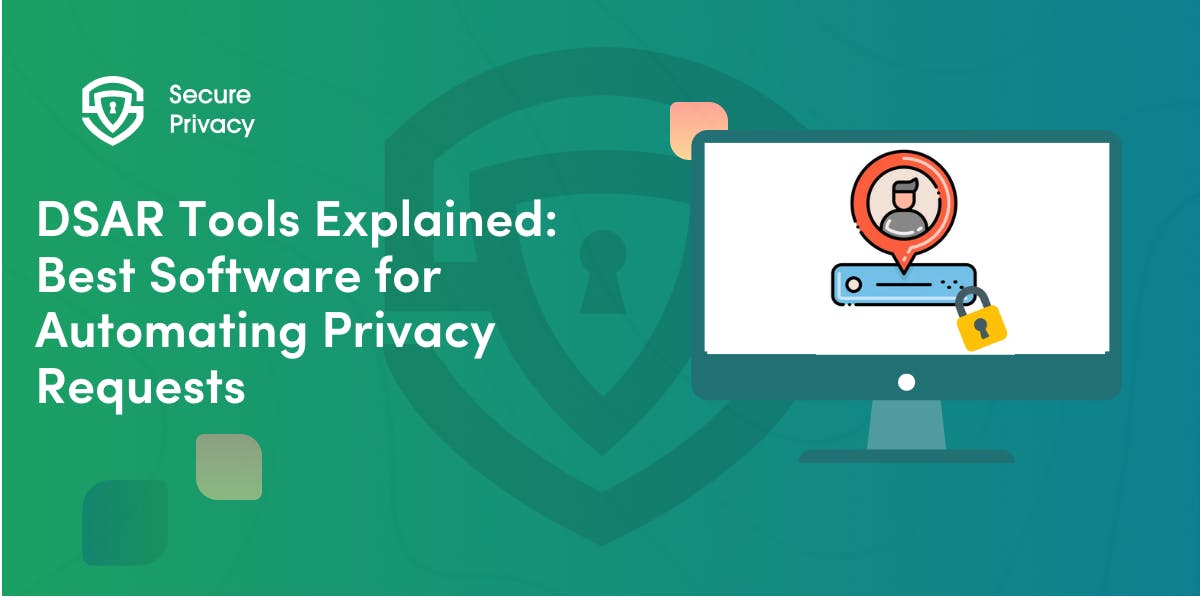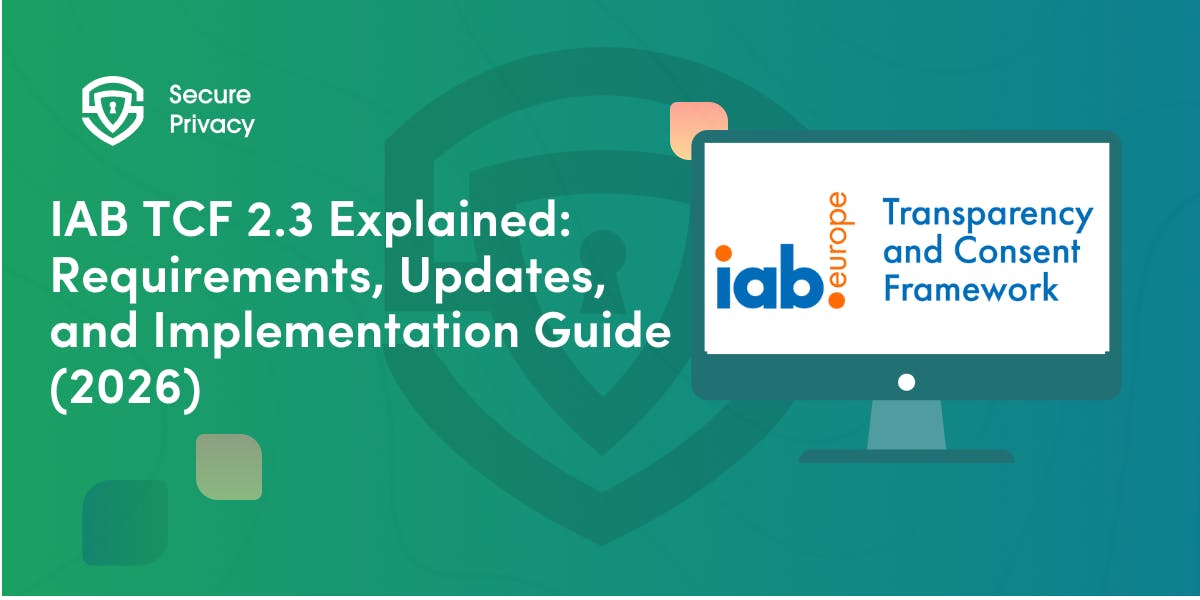Google Consent Mode & GA4: What Your CMP Needs to Handle in 2025
Your Google Analytics 4 data might be incomplete or non-compliant if your consent management platform isn't properly integrated with Google Consent Mode v2.
With mandatory enforcement since March 2024, businesses serving EU users face immediate data loss and regulatory violations when signals aren't communicated correctly to the platform's systems.
Most marketing teams don't realize that simply having a banner isn't enough — advertising and analytics platforms require specific signals that must be transmitted in real-time to maintain both regulatory protection and campaign effectiveness. When these signals are missing or incorrect, you lose crucial attribution data while potentially violating privacy regulations.
The stakes have never been higher. Google Consent Mode v2 represents a fundamental shift in how analytics and advertising data gets collected, requiring sophisticated integration between your management platform and the ecosystem. Understanding what your CMP must handle could mean the difference between maintaining campaign performance and losing critical marketing insights.
Introduction
Google Consent Mode: Essential Infrastructure for Modern Marketing
Google Consent Mode is an API framework that enables websites to communicate user privacy choices directly to platform tags, allowing dynamic adjustment of data collection in line with privacy regulations like GDPR, CCPA, and emerging state privacy laws.
The system works as a bridge between your Consent Management Platform and the advertising and analytics ecosystem. It ensures that user privacy choices are respected while maintaining marketing measurement capabilities through advanced modeling and privacy-preserving techniques.
Google Consent Mode v2, mandatory since March 2024, introduces enhanced granular controls and improved transparency features that require sophisticated CMP integration to function correctly. Businesses without proper implementation face immediate data collection issues and regulatory vulnerabilities.
Why This Matters in 2025: Privacy Enforcement and Data Accuracy
Regulatory enforcement has intensified with privacy authorities specifically examining how businesses handle permissions for analytics and advertising. Google Consent Mode provides the technical framework needed to demonstrate regulatory protection while maintaining marketing effectiveness.
Data accuracy depends entirely on proper signal transmission. Without correct implementation, GA4 reports become unreliable, attribution modeling breaks down, and campaign optimization loses effectiveness due to incomplete or inaccurate user behavior data. (The same applies to Microsoft Ads. Learn all about Microsoft Clarity here.)
What Is Google Consent Mode v2?
Core Functionality and Signal Types
Google Consent Mode operates through four key signals that communicate user privacy choices to the platform's systems in real-time:
Analytics_storage controls whether Analytics can store data and collect user behavior information for analytics purposes. When denied, GA4 switches to cookieless measurement and behavioral modeling to maintain insights.
Ad_storage manages advertising-related data collection including conversion tracking, remarketing audiences, and campaign attribution. This signal affects Ads performance and optimization capabilities significantly.
Ad_user_data (new in v2) governs the use of personal data for advertising purposes. It provides more granular control over how user information gets processed for campaign targeting and measurement.
Ad_personalization (new in v2) specifically controls remarketing and personalized advertising features. This allows users to accept conversion tracking while declining behavioral targeting.
How Consent Signals Work in Practice
Real-time communication ensures that user privacy choices immediately affect all connected services. When someone withdraws marketing permission, Ads stops using their data for remarketing within seconds of the signal transmission.
Default states can be set based on user location, with EU visitors defaulting to "denied" while users from less regulated jurisdictions might default to "granted" based on your strategy and risk tolerance.
Key Differences Between v1 and v2
Version 1 provided basic signals for analytics and advertising storage, sufficient for initial GDPR protection but lacking the granular controls that evolved privacy regulations now require for comprehensive user choice.
Google Consent Mode v2 introduces enhanced transparency through additional parameters that provide users with more specific control over how their personal data gets used for advertising and personalization purposes.
GA4 Consent Mode: What's at Stake?
Default GA4 Behavior Without Proper Consent
Without signals, GA4 collects minimal data and provides incomplete user behavior insights (note that if you're using Microsoft Clarity, no user behavioral insights are recorded without consent) that make campaign optimization and business intelligence nearly impossible. This data limitation affects everything from audience understanding to conversion attribution.
Attribution modeling breaks down when permissions aren't properly managed, creating blind spots in customer journey analysis. These blind spots lead to poor marketing investment decisions and missed optimization opportunities.
Effects on Marketing Performance and Data Quality
Campaign optimization suffers dramatically when Google Ads algorithms can't access complete user behavior data for bid optimization, audience building, and conversion prediction. This performance degradation affects ROI across all digital marketing channels.
Audience targeting becomes less effective without proper consent for remarketing and personalization features. This reduces the precision and effectiveness of advertising campaigns while increasing customer acquisition costs.
Data Recovery Through Modeling
Behavioral modeling compensates for lost data by using aggregated insights from consenting users to estimate behavior patterns and conversion likelihood for users who've declined tracking consent.
Conversion modeling maintains campaign optimization capabilities by providing estimated conversion data when direct tracking isn't possible. This enables continued algorithm training and performance improvement despite privacy restrictions.
[Learn about another alternative: Meta Consent Mode 2025]
What Your CMP Needs to Handle in 2025
Dynamic Consent Signal Management
Real-time signal transmission ensures consent choices reach Google services immediately, preventing compliance gaps and data collection errors. These errors occur when consent updates are delayed or lost during transmission.
Granular consent control must handle all four Consent Mode v2 parameters separately. This allows users to make nuanced choices about analytics versus advertising, personalization versus measurement, and different types of data processing.
Google Tag Manager Consent Integration Requirements
Native GTM compatibility enables seamless consent signal transmission through Google's tag management infrastructure. This ensures all connected marketing tools receive accurate consent information without custom development or manual configuration.
Trigger-based tag management automatically enables or blocks marketing tags based on consent status. This prevents non-compliant data collection while maintaining functionality for users who provide appropriate permissions.
Geographic and Regulatory Compliance
Location-based consent logic automatically adapts consent collection and default settings based on user location. This ensures GDPR compliance for EU visitors while optimizing user experience for visitors from less regulated jurisdictions.
Regulatory framework adaptation handles different consent requirements across GDPR, CCPA, LGPD, and emerging privacy laws. This happens without requiring separate implementations or constant manual updates as regulations evolve.
Advanced Technical Capabilities
Automatic script blocking prevents marketing tools from loading until appropriate consent is obtained. This ensures true "prior consent" compliance that satisfies the most stringent privacy law interpretations.
Consent revocation handling immediately stops data collection when users withdraw consent. It communicates these changes to all connected systems to ensure ongoing compliance throughout the customer lifecycle.
[Curious about how all this works in Meta Consent Mode? Click here.]
Common Integration Pitfalls
Technical Implementation Errors
Tags firing before consent represents the most common and dangerous implementation error. This occurs when marketing tools load automatically while consent collection happens separately, creating immediate compliance violations.
Incorrect default consent states can result in either privacy violations (defaulting to granted in regulated jurisdictions) or unnecessary data loss (defaulting to denied everywhere). This requires careful geographic and legal consideration.
CMP Compatibility Issues
Using CMPs without native Consent Mode support forces manual integration that's prone to errors, delays, and incomplete functionality. This leaves compliance gaps and reduces marketing effectiveness.
Inadequate signal transmission occurs when CMPs can communicate basic consent but lack the sophistication needed for Consent Mode v2's granular parameters and real-time updates.
See how we compare to other CMPs such as Usercentrics and OneTrust.
Testing and Validation Failures
Incomplete cross-browser testing misses compatibility issues that affect consent signal transmission on different browsers, devices, or network conditions. This creates compliance gaps for specific user segments.
Insufficient consent flow testing fails to verify that user privacy choices actually affect data collection as intended. This leaves businesses with false confidence about their compliance status.
Checklist: Is Your CMP Ready for Google Consent Mode?
Essential Technical Capabilities
Native Google Consent Mode v2 Support: Your CMP must communicate all four consent parameters automatically without custom development or manual configuration.
Key parameters include:
- analytics_storage
- ad_storage
- ad_user_data
- ad_personalization
Real-Time GTM Integration: Consent signals must reach Google Tag Manager immediately when users make choices. This enables instant script activation or blocking based on current consent status.
Geographic Consent Logic: The platform should automatically adapt consent collection and default settings based on user location. This ensures appropriate compliance across different regulatory environments.
Automatic Script Blocking: Non-essential tracking must be prevented from loading until explicit consent is obtained. This ensures true prior consent compliance that satisfies regulatory requirements.
Compliance and Documentation Features
Comprehensive Audit Trails: Your CMP must maintain detailed records of consent collection including timestamps, user choices, policy versions, and signal transmission logs for regulatory compliance.
Consent Revocation Handling: The system should immediately communicate consent withdrawals to all connected Google services. This ensures ongoing compliance when users change their privacy preferences.
Multi-Language Support: International businesses need consent interfaces and documentation in appropriate languages for their user base. This maintains compliance across different markets.
Business Integration Requirements
Marketing Tool Compatibility: Your CMP must integrate seamlessly with Google Analytics, Google Ads, and other marketing platforms in your technology stack. This should happen without requiring extensive custom development.
Performance Optimization: Consent management shouldn't negatively impact website speed or user experience while maintaining comprehensive compliance and functionality.
Scalable Architecture: The solution should support multiple websites, international operations, and growing marketing technology stacks without requiring separate implementations.
Transform Consent Management Into Competitive Advantage
Google Consent Mode v2 represents a fundamental shift in how businesses must approach analytics and advertising data collection. Organizations that implement sophisticated consent management gain significant advantages in both compliance protection and marketing effectiveness compared to competitors with basic or inadequate implementations.
The technical complexity of proper Google Consent Mode integration requires specialized expertise and infrastructure that most businesses can't develop internally. Choosing the right consent management platform determines whether your business can effectively navigate Google's requirements while maintaining the marketing insights essential for growth.
Success with Google Consent Mode depends on viewing consent management as essential marketing infrastructure rather than compliance overhead. When implemented correctly, sophisticated consent management maintains comprehensive analytics capabilities while building user trust through transparent privacy practices.
The future belongs to businesses that can balance privacy compliance with marketing effectiveness through advanced consent management technology. Organizations that invest in proper Google Consent Mode integration now position themselves advantageously for continued regulatory evolution while maintaining the data insights necessary for competitive success.
Frequently Asked Questions
Q: Do I need Google Consent Mode if I don't serve EU users?
A: While GDPR triggered development, it's increasingly valuable for all businesses using Analytics and Ads. Even US-focused businesses benefit from modeling capabilities when users decline tracking.
Many US states are implementing privacy laws with similar requirements.
Q: What happens to my GA4 information when users decline permissions?
A: With proper implementation, GA4 uses behavioral and conversion modeling to estimate user activity and fill gaps. You'll see modeled information in reports (indicated by a quality icon), maintaining insights while respecting privacy choices.
Q: Can my current banner work with Google Consent Mode?
A: Basic banners typically can't communicate the specific signals the platform requires. You need a CMP that natively supports v2's four parameters and can transmit real-time updates to Tag Manager or gtag.js.
Q: How do I know if my implementation is working correctly?
A: Use Tag Manager's Overview panel to verify tag firing behavior and check GA4's quality indicators for modeled information presence. Your CMP should also provide audit trails showing signal transmission to services.
Q: Does the platform affect Ads campaign performance?
A: Initially, campaigns may see reduced audience sizes and attribution information when users decline permissions. However, conversion modeling helps maintain optimization capabilities.
Many businesses find that quality information from permitting users provides better campaign performance than incomplete tracking.
Q: What's the difference between basic and advanced implementation?
A: Basic implementation blocks all tags until permission is granted, providing strict privacy but no information when declined. Advanced implementation allows tags to fire with limited, cookieless collection that enables modeling while maintaining privacy.
Q: How long does the platform store choices?
A: The platform doesn't store choices—your CMP manages storage and communicates current status to services on each page load. Persistence depends on your CMP's implementation and your privacy policy terms.
Q: Can I use the platform with other analytics tools?
A: The system specifically communicates with platform services. For other tools, your CMP needs separate integration capabilities.
Look for CMPs that support multiple analytics and advertising platforms beyond just one ecosystem.
Q: What happens if I don't implement v2 by the deadline?
A: The platform doesn't "break" websites without the system, but you may lose access to certain advertising features, experience reduced quality, and face regulatory risks in regulated jurisdictions. Implementation remains important even after official deadlines.
Q: How does the system handle users who change their privacy preferences?
A: Advanced CMPs with proper integration immediately transmit updates to services when users modify their preferences. This ensures real-time protection with changing user choices throughout their journey with your brand.
Get Started For Free with the
#1 Cookie Consent Platform.
No credit card required

What is Cookie Consent? A Quick 2026-Ready Glance
Your website loads. Cookies track users. But without proper cookie consent, you're violating GDPR — risking fines up to €20 million or 4% of global revenue. Cookie consent is the legally required mechanism by which websites obtain explicit user approval before deploying non-essential tracking technologies. This requirement stems from GDPR Article 4(11) and the ePrivacy Directive, mandating that consent must be freely given, specific, informed, and unambiguous.
- Legal & News

DSAR Tools Explained: Best Software for Automating Privacy Requests
You're drowning in data subject access requests. Manual searches through dozens of systems miss regulatory deadlines and expose organizations to fines starting at $2,500 per violation. The solution? DSAR tools — purpose-built software that automates the entire process of responding to data subject access requests, from intake to delivery.
- Legal & News

IAB TCF 2.3 Explained: Requirements, Updates, and Implementation Guide (2026)
Your ad revenue dropped 40% overnight. Google stopped bidding on your inventory. Your DSP partners flagged your traffic as non-compliant. The culprit? An outdated TCF 2.2 consent string after the February 2026 enforcement deadline.
- Legal & News
- Cookie Consent

